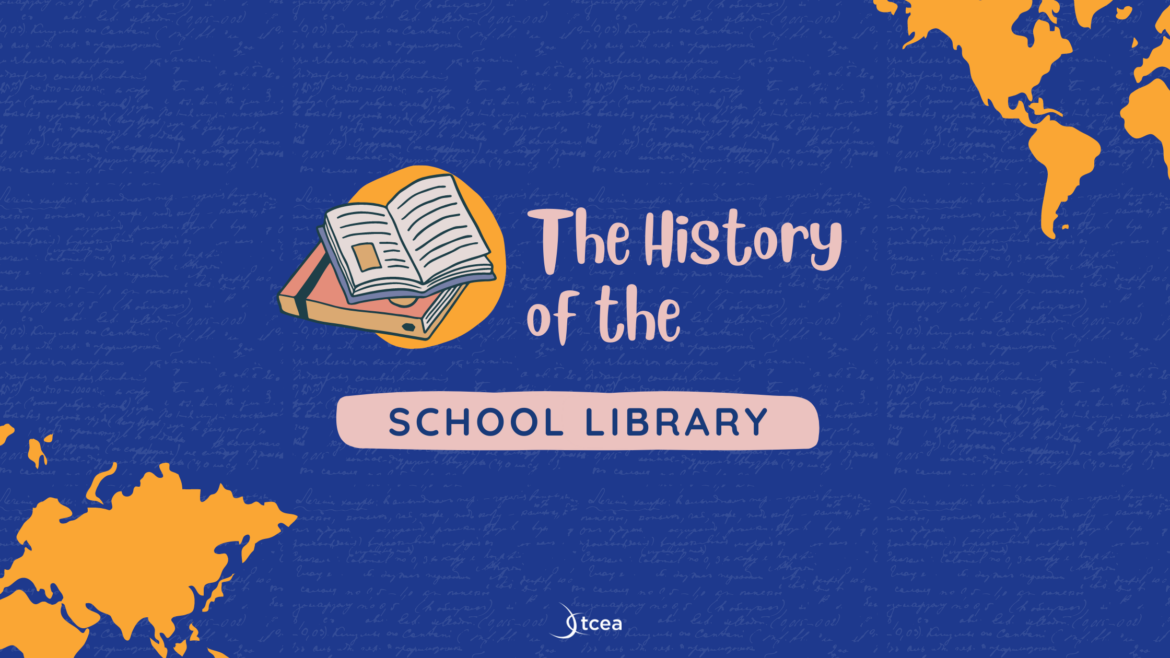This post is part of a series celebrating National Library Week. Learn more about NLW events, activities, and resources here.
Mary Kingsbury was the United States’ first official school librarian. In 1900, after decades of growth in the public library system, schools began considering hiring trained professionals to manage libraries on their campuses. Kingsbury set the example for generations of librarians, teacher-librarians, media specialists, and other library professionals. Since then, what a library is, how it works, and what a librarian does has changed.
Here’s a brief description of the evolution of school libraries and the dedicated experts who run them.
Beginnings
In some ways, classroom libraries are as old as classrooms, especially in the earliest years of public education when teachers were often the only person with books at all — a fact which necessitated sharing. In the United States, school libraries were suggested as early as the pre-Independence era, with National Library Week sponsor, the American Library Association (ALA), noting:
… in 1740 Benjamin Franklin recommended school libraries as a key element in the ideal academy, and the Penn Charter School in Philadelphia designating a specially designed room as the library in 1744.
“First School Library?”, American Library Association, March 28, 2011. http://www.ala.org/tools/first-school-library
As noted above, by the turn of the 20th century, the need for a class of trained, professional librarians in American schools was leading to the creation of certification exams and the hiring of the inaugural generation of specialists in school libraries. Since then, the role of librarians, and the school library itself, has expanded greatly.
Changing World, Changing Roles
As the field grew, new ideas were tested and best practices for organizing, choosing, and sharing materials spread. By the mid-twentieth century, school libraries were commonplace throughout the U.S. Over the course of the century, standards were developed, associations formed, and librarians made ever-more professionalized.
Meanwhile, the same period of time saw continued growth in printing, publishing, and graphic design. Similarly, as schools generated well-educated graduates, newspapers, books, and more grew, too.
By the second half of the century, however, the ways we communicate began to change. After two world wars and the intense Cold War space race, tech was changing how we access information.
The Rise of Tech
Roles continued to change with the rise of new technologies, especially the digital technologies that eventually gave rise to word processing, asynchronous learning, and, of course, the internet.
In addition, audio-visual materials became a central focus of all kinds of librarianship, particularly in schools, where various ways to access knowledge is vital. In 2016, education researcher Lois D. Wine noted this trend, and how it evolved as A/V moved from slide projectors and film reels, VCRs, and laser discs to digital video, streaming, video calls, and all the many forms of communication we contend with today.
Notably, Wine draws a connection between librarians and instructional technologists, a relatively new and fast-growing profession tasked with technology integration and the intersection between pedagogy and technology.
With the advent of the Information Age in the middle of the 20th century and the subsequent development of personal computers and the Internet, the American Library Association (ALA) recommended schools and colleges begin integrating information literacy into students’ learning …
School librarians and instructional technology specialists have complementary roles that would benefit students and staff through a collaborative team approach to support. When educating future school library practitioners LIS educators need to be aware of this evolution in practice and adjust curriculum accordingly.
Wine, Lois. (2016). School Librarians as Technology Leaders: An Evolution in Practice. Journal of Education for Library and Information Science Online. 57. 207-220. 10.12783/issn.2328-2967/57/2/12.
Today
With these changes, it’s easy to see how librarianship has evolved since Ms. Kingsbury became America’s first official school librarian. Today, librarians and media specialists, along with teachers, teacher-librarians, administrators, and instructional technologists work together to integrate useful information technologies that augment good teaching and connect learners with more resources and paths into learning.
Notably, in today’s diverse, broad, and sometimes divisive media landscape, digital literacy has become a central part of school libraries. Indeed, at a time when some may question the value of physical libraries in the age of the internet, it’s also clear that librarians can act as trusted guides, equipped with the latest tech and insights, to shepherd learners on their journey. In this way, contemporary school librarians have new and vital roles, in addition to the traditional running of an in-person learning hub.
Future
There’s little doubt similar trends, changes, and flexibility will be required in the ways we connect students, educators, staff, and students with information. What are your thoughts on the future of school libraries? How do you hope to use your library to influence learning in the future? Share your reflections and ideas in the comments section.
Photo by cottonbro from Pexels


2 comments
I sent this to our school librarian for School Librarian week…she loved it! Thanks for sharing!